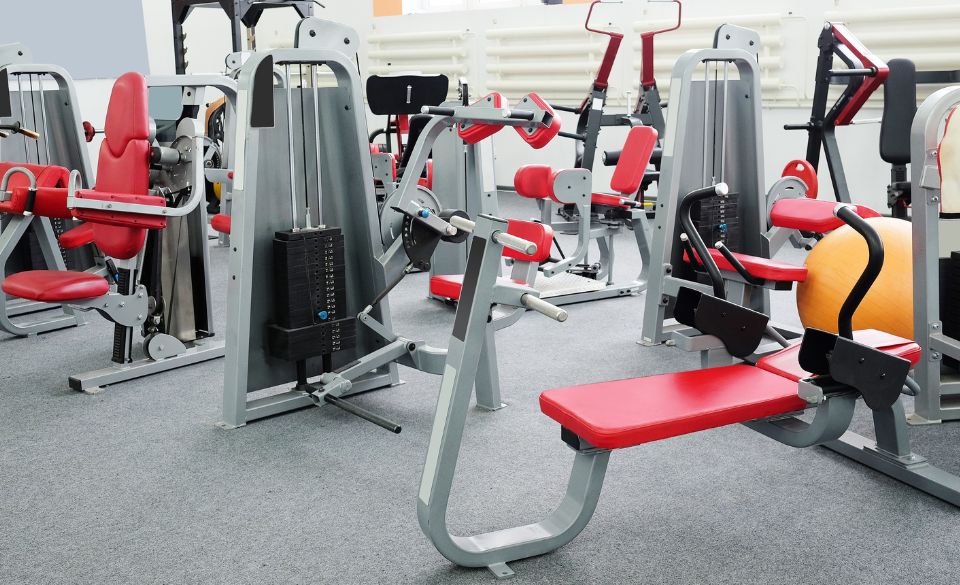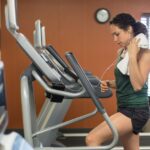
What Equipment Do I Need To Use In The Gym
In recent years, the popularity of gym training has skyrocketed as more and more people look to improve their fitness and overall health. However, with so many different types of equipment available at the gym, it can be overwhelming to know where to start. Here are some statistics, facts, trends, and data on the topic of what equipment you need to use in the gym:
According to a report by the International Health, Racquet & Sportsclub Association, the global health and fitness industry is worth over $94 billion, with over 200,000 fitness centers worldwide.
Cardiovascular equipment such as treadmills, ellipticals, and stationary bikes are the most popular types of gym equipment, with weightlifting equipment and group fitness classes also ranking high in popularity.
The American Council on Exercise recommends using a combination of cardio and strength training equipment to achieve the best results from your workouts.
The amount of equipment you need will depend on your fitness goals and workout plan, but common gym equipment includes cardio machines, weight machines, free weights, resistance bands, and exercise balls.
Group fitness classes, such as yoga, Pilates, and cycling, have become increasingly popular in recent years, with many gyms offering a wide range of classes to suit different interests and fitness levels.
Overall, having access to a variety of gym equipment can help you achieve your fitness goals and stay motivated. It’s important to understand which equipment is best suited to your individual needs and goals, and to use proper form and technique to avoid injury and maximize your results.
Equipment Available At The Gym
Gyms are typically equipped with a wide range of equipment designed to support various fitness goals and preferences. Here are some common types of equipment you might find at the gym:
Cardio Machines: Cardio machines such as treadmills, ellipticals, stationary bikes, rowing machines, and stair climbers can help improve cardiovascular health, burn calories, and improve endurance.
Weight Machines: Weight machines are designed to target specific muscle groups and provide a controlled range of motion. They can be helpful for beginners or those recovering from injury.
Free Weights: Free weights, such as dumbbells and barbells, can help build muscle, improve strength, and promote fat loss. They offer a wide range of exercises and allow for more natural movements than weight machines.
Resistance Bands: Resistance bands can provide varying levels of resistance and are useful for exercises such as bicep curls, tricep extensions, and squats. They are also a great tool for stretching and flexibility exercises.
Exercise Balls: Exercise balls can be used for a variety of exercises, including core strengthening, balance training, and stretching. They can help improve stability and core strength.
Functional Training Equipment: Functional training equipment, such as suspension trainers, kettlebells, and battle ropes, can help improve strength, flexibility, and endurance by simulating real-world movements.
Group Fitness Equipment: Group fitness equipment such as yoga mats, step platforms, and resistance bands are used in classes such as yoga, Pilates, and aerobics.
Overall, the equipment available at the gym can support a wide range of fitness goals and preferences. It’s important to understand which equipment is best suited to your individual needs and goals, and to use proper form and technique to avoid injury and maximize your results.
What Equipment Do I Need To Use In The Gym
Sure, here are some common types of gym equipment and how they can be used to support your fitness goals:
Cardio Machines: Treadmills, ellipticals, and stationary bikes are popular types of cardio equipment. These machines can help improve cardiovascular health, burn calories, and improve endurance. Aim to use these machines for at least 20-30 minutes per session, and gradually increase intensity and duration over time.
Weight Machines: Weight machines are designed to target specific muscle groups and can be helpful for beginners or those recovering from injury. These machines provide a controlled range of motion and are typically safer than free weights. Use weight machines to target specific muscle groups and gradually increase weight and repetitions over time.
Free Weights: Free weights, such as dumbbells and barbells, can help build muscle, improve strength, and promote fat loss. Use free weights to perform exercises such as squats, lunges, deadlifts, and bench presses. Be sure to use proper form and technique, and start with lighter weights before gradually increasing intensity.
Resistance Bands: Resistance bands can be a versatile and portable alternative to traditional weights. These bands provide varying levels of resistance and can be used for exercises such as bicep curls, tricep extensions, and squats. Resistance bands can also be used for stretching and flexibility exercises.
Exercise Balls: Exercise balls can be used for a variety of exercises, including core strengthening, balance training, and stretching. These balls can help improve stability and core strength, and can be a fun and challenging addition to your workout routine.
Ultimately, the equipment you use will depend on your fitness goals and personal preferences. A combination of cardio and strength training equipment, as well as stretching and flexibility exercises, can help you achieve a well-rounded fitness program. Be sure to consult with a qualified fitness professional if you’re unsure about which equipment is best for you.


